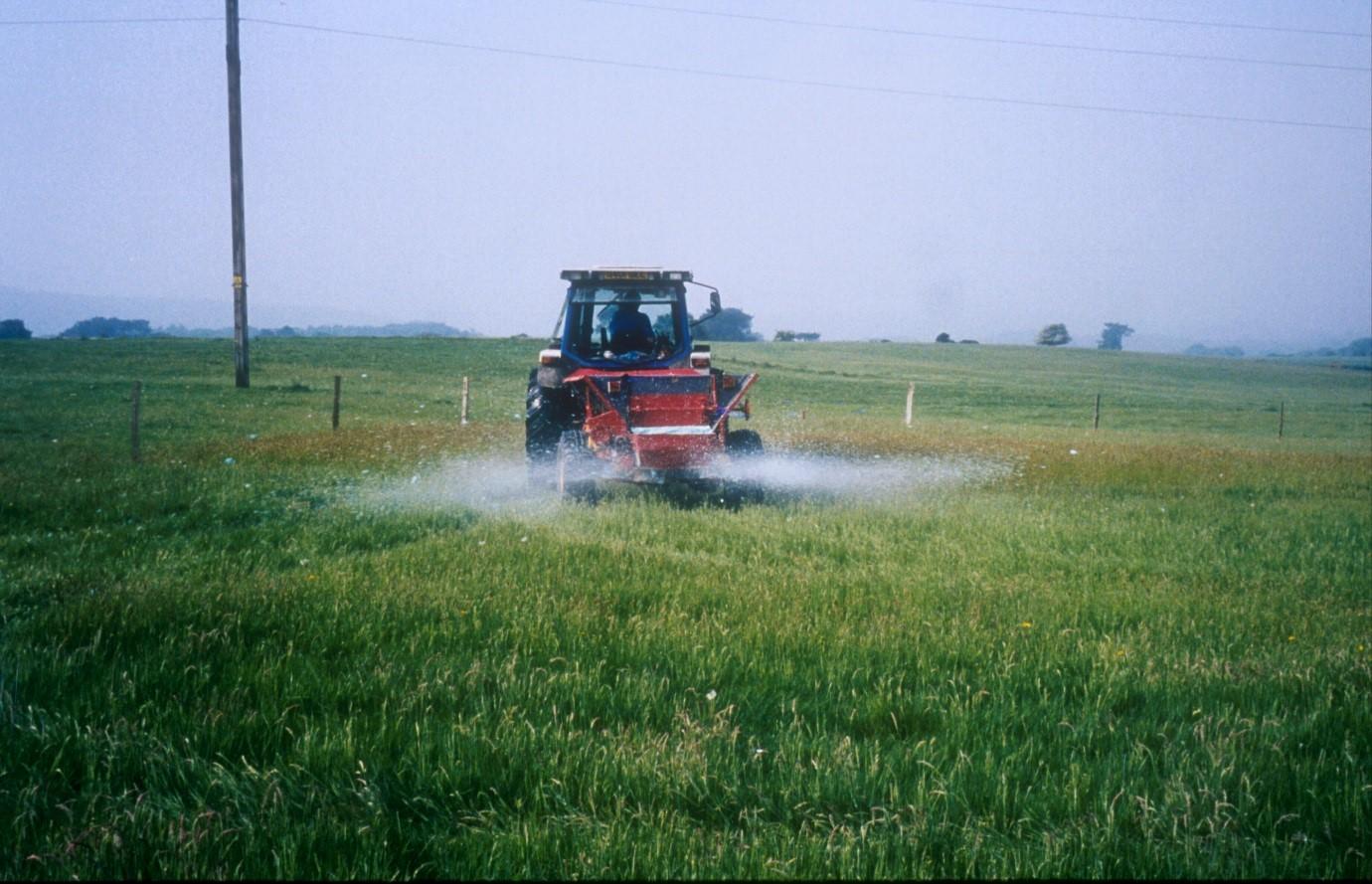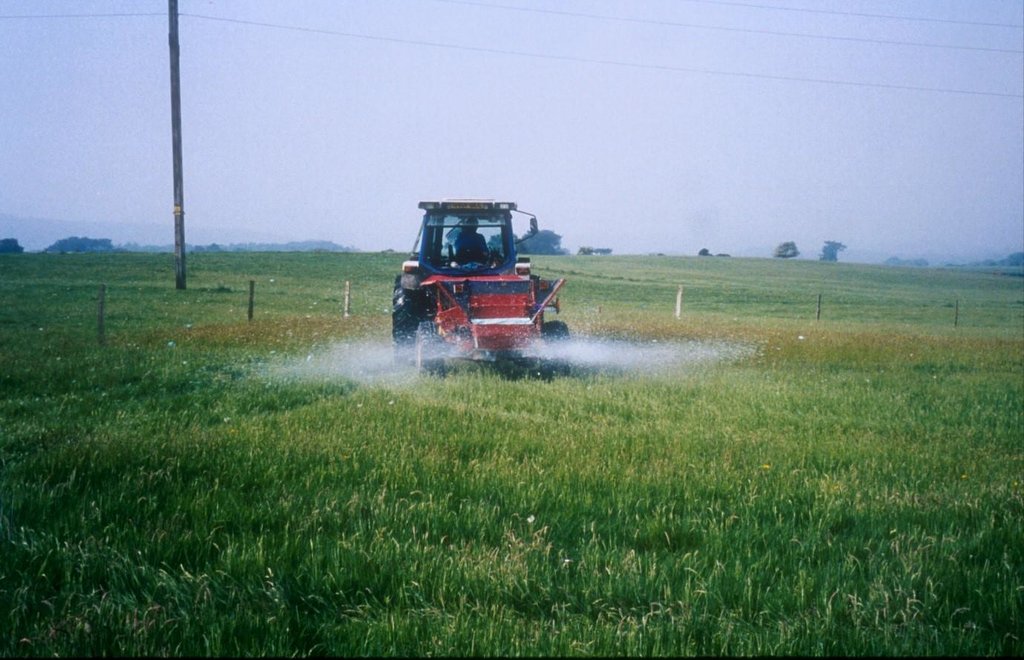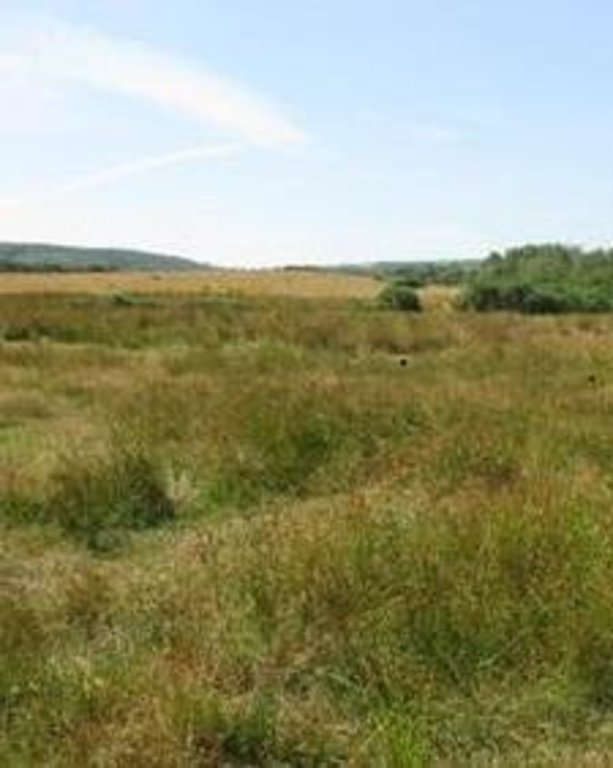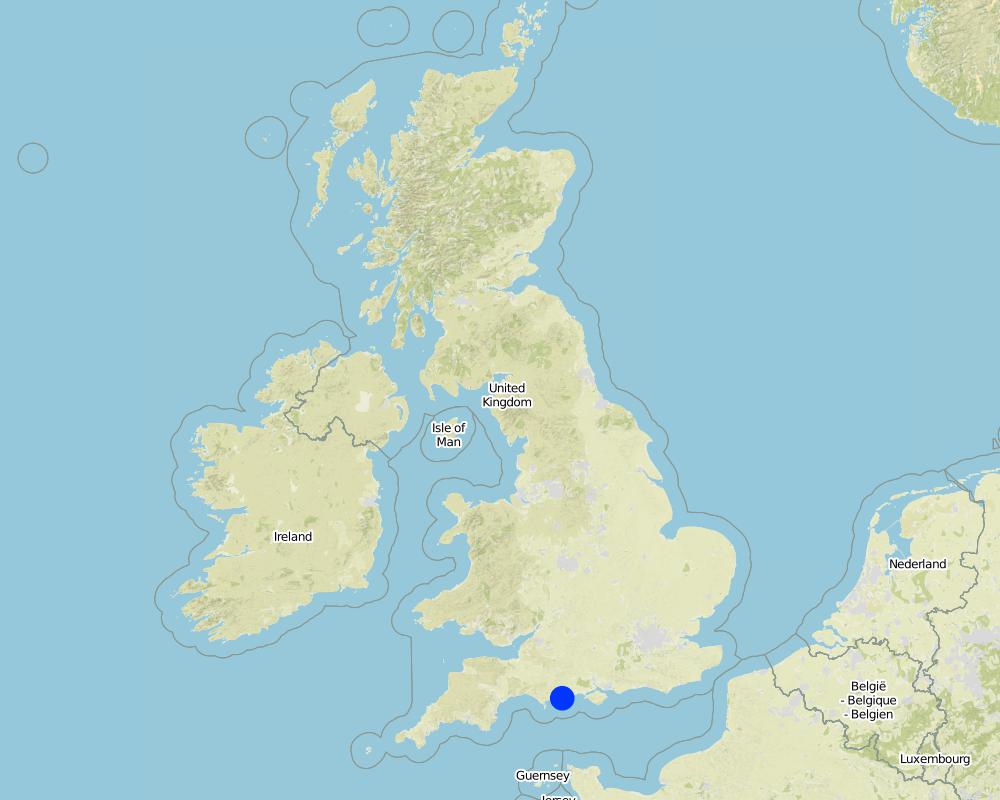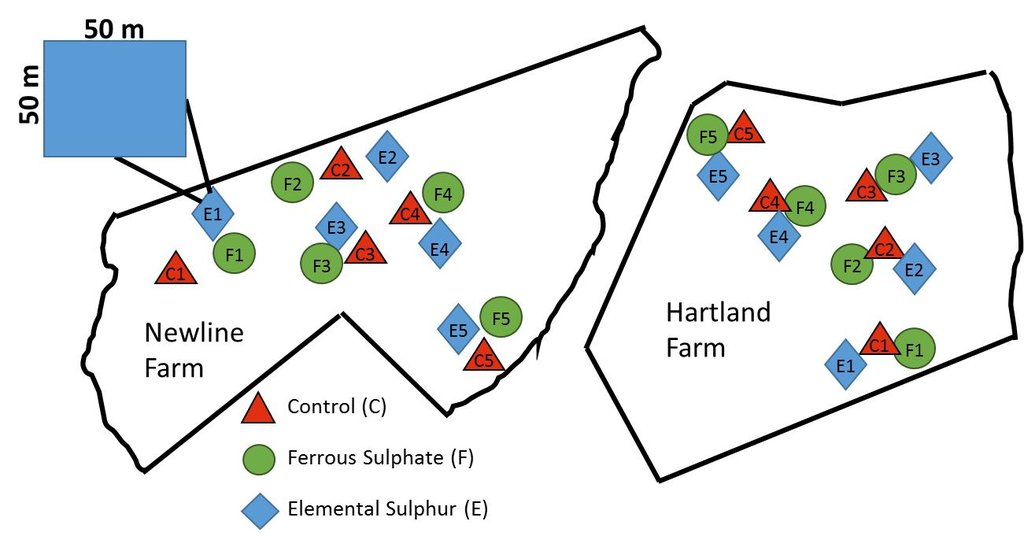Soil pH management [United Kingdom]
- Creation:
- Update:
- Compiler: Tandra Fraser
- Editor: –
- Reviewers: Fabian Ottiger, Alexandra Gavilano
technologies_1727 - United Kingdom
View sections
Expand all Collapse all1. General information
1.2 Contact details of resource persons and institutions involved in the assessment and documentation of the Technology
SLM specialist:
Tibbett Mark
Centre for Agri-Environmental Research, School of Agriculture, Policy and Development, University of Reading
United Kingdom
Name of the institution(s) which facilitated the documentation/ evaluation of the Technology (if relevant)
Centre for Agri-Environmental Research (CAER) - United KingdomName of the institution(s) which facilitated the documentation/ evaluation of the Technology (if relevant)
University of Reading (University of Reading) - United Kingdom1.3 Conditions regarding the use of data documented through WOCAT
The compiler and key resource person(s) accept the conditions regarding the use of data documented through WOCAT:
Yes
1.5 Reference to Questionnaire(s) on SLM Approaches (documented using WOCAT)
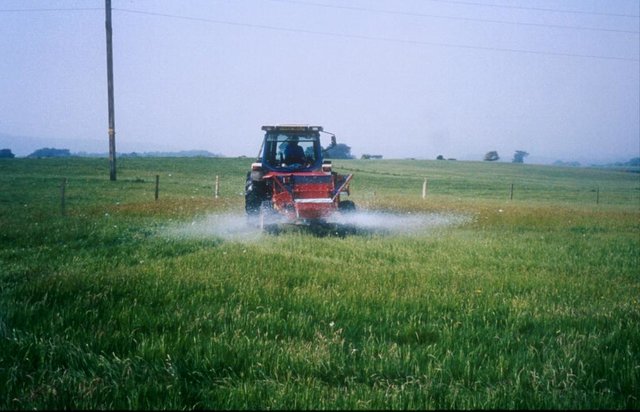
Soil pH management [United Kingdom]
Acidification treatments were applied to improved pastures in an attempt to restore plots to low-intensity grazing land
- Compiler: Tandra Fraser
2. Description of the SLM Technology
2.1 Short description of the Technology
Definition of the Technology:
Acidification treatments were applied to improved pastures in an attempt to restore plots to a semi-natural state
2.2 Detailed description of the Technology
Description:
Change in landuse from improved agricultural land to low input grazing land. Acidification treatments were applied to plots on the Isle of Purbeck that had previously been used for arable production and then high intensity grazing. The site is located on acidic fluvially-deposited soil and was in lowland heath until the middle of the 20th century at which time the land was tilled and treatments of rock phosphate, marl and chalk were added to increase soil pH and nutrient availability and improve the potential of the land for agricultural production.
Purpose of the Technology: The purpose of this technology was to convert the area from intensive pastureland to a semi-natural state with low intensity grazing through alteration of the soil pH. This change in land-use should have a positive effect on both above- and belowground biodiversity.
Establishment / maintenance activities and inputs: Plots were established on two adjacent farms owned by National Trust near Wareham, Dorset (Newlines Farm and Hartland Farm). A control and two sulphur amendments were compared on plots on ten fields (five from each farm) on 50 m x 50 m plots. Elemental sulphur (Brimestone 90TM) or ferrous sulphate (Mistrale “Wet Copperas” 50TM) were applied at equal rates of 2000 kg ha-1 in May 2000 and a second application of 1600 kg ha-1 in March 2001.
Natural / human environment: The Isle of Purbeck is a multifunctional landscape with competing land uses including arable farming, livestock grazing, and recreational activities. Soil resources in the region have been under pressure from persistent physical and chemical manipulation, with consequences for soil biodiversity and function.
2.3 Photos of the Technology
2.5 Country/ region/ locations where the Technology has been applied and which are covered by this assessment
Country:
United Kingdom
Region/ State/ Province:
Dorset
Further specification of location:
Wareham
Comments:
Total area covered by the SLM Technology is 0.6 km2.
This was a field experiment so treatments were only applied to a portion of this area.
Map
×2.6 Date of implementation
If precise year is not known, indicate approximate date:
- 10-50 years ago
2.7 Introduction of the Technology
Specify how the Technology was introduced:
- through projects/ external interventions
3. Classification of the SLM Technology
3.2 Current land use type(s) where the Technology is applied

Grazing land
Extensive grazing:
- Semi-nomadic pastoralism
Animal type:
- cattle - dairy
Comments:
Major land use problems (compiler’s opinion): Changing land use needs in a diverse landscape
Major land use problems (land users’ perception): Changing land use demands, soil compaction on arable land, soil sealing, intensive agriculture, acidification of chalk hills by gorse
Semi-nomadism / pastoralism: Cattle
Future (final) land use (after implementation of SLM Technology): Grazing land: Ge: Extensive grazing land
3.3 Has land use changed due to the implementation of the Technology?

Grazing land
Comments:
Future (final) land use (after implementation of SLM Technology): Grazing land: Ge: Extensive grazing land
Grazing land: Gi: Intensive grazing/ fodder production
3.4 Water supply
Water supply for the land on which the Technology is applied:
- rainfed
Comments:
Water supply: post-flooding
Number of growing seasons per year:
1
3.5 SLM group to which the Technology belongs
- Soil pH management
3.6 SLM measures comprising the Technology

management measures
- M2: Change of management/ intensity level
- M5: Control/ change of species composition
Comments:
Main measures: management measures
3.7 Main types of land degradation addressed by the Technology

chemical soil deterioration
- Ca: acidification

biological degradation
- Bh: loss of habitats
- Bs: quality and species composition/ diversity decline
- Bl: loss of soil life
Comments:
Main type of degradation addressed: Bh: loss of habitats, Bs: quality and species composition /diversity decline, Bl: loss of soil life
Secondary types of degradation addressed: Ca: acidification
Main causes of degradation: soil management (Soil pH was previously increased for agricultural production. Land may be restored to a semi-natural production system by lowering soil pH.)
Secondary causes of degradation: crop management (annual, perennial, tree/shrub) (Intensively managed arable crops, low input pasture land)
3.8 Prevention, reduction, or restoration of land degradation
Specify the goal of the Technology with regard to land degradation:
- restore/ rehabilitate severely degraded land
Comments:
Secondary goals: rehabilitation / reclamation of denuded land
4. Technical specifications, implementation activities, inputs, and costs
4.1 Technical drawing of the Technology
Technical specifications (related to technical drawing):
Schematic representation of plot layout across Newline and Hartland Farm as control, ferrous suphate and elemental sulphur treatments.
Location: Near Warehame. Dorset, Ilse of Purbeck
Date: 21-3-2016
Technical knowledge required for field staff / advisors: moderate
Technical knowledge required for land users: moderate
Main technical functions: Soil biological functions
Secondary technical functions: increase of surface roughness, increase in organic matter, increase of infiltration, promotion of vegetation species and varieties (quality, eg palatable fodder)
Change of land use type: Intensive grazing (Gi) to extensive grazing (Ge)
Control / change of species composition: More diverse species mix
Author:
Tandra Fraser, University of Reading, Earley Gate, PO Box 237, Reading UK RG66AR
4.3 Establishment activities
| Activity | Timing (season) | |
|---|---|---|
| 1. | Fertilizer additions | x2 |
4.5 Maintenance/ recurrent activities
| Activity | Timing/ frequency | |
|---|---|---|
| 1. | Monitoring | Variable |
4.6 Costs and inputs needed for maintenance/ recurrent activities (per year)
Comments:
Machinery/ tools: Fertilizer spreader
4.7 Most important factors affecting the costs
Describe the most determinate factors affecting the costs:
The experiment was established in 1998 and costs are not available
5. Natural and human environment
5.1 Climate
Annual rainfall
- < 250 mm
- 251-500 mm
- 501-750 mm
- 751-1,000 mm
- 1,001-1,500 mm
- 1,501-2,000 mm
- 2,001-3,000 mm
- 3,001-4,000 mm
- > 4,000 mm
Agro-climatic zone
- sub-humid
Thermal climate class: temperate
5.2 Topography
Slopes on average:
- flat (0-2%)
- gentle (3-5%)
- moderate (6-10%)
- rolling (11-15%)
- hilly (16-30%)
- steep (31-60%)
- very steep (>60%)
Landforms:
- plateau/plains
- ridges
- mountain slopes
- hill slopes
- footslopes
- valley floors
Altitudinal zone:
- 0-100 m a.s.l.
- 101-500 m a.s.l.
- 501-1,000 m a.s.l.
- 1,001-1,500 m a.s.l.
- 1,501-2,000 m a.s.l.
- 2,001-2,500 m a.s.l.
- 2,501-3,000 m a.s.l.
- 3,001-4,000 m a.s.l.
- > 4,000 m a.s.l.
Comments and further specifications on topography:
Altitudinal zone: 0-100 m a.s.l. (10 m a.s.l)
5.3 Soils
Soil depth on average:
- very shallow (0-20 cm)
- shallow (21-50 cm)
- moderately deep (51-80 cm)
- deep (81-120 cm)
- very deep (> 120 cm)
Soil texture (topsoil):
- coarse/ light (sandy)
Topsoil organic matter:
- high (>3%)
If available, attach full soil description or specify the available information, e.g. soil type, soil PH/ acidity, Cation Exchange Capacity, nitrogen, salinity etc.
Soil fertility is medium
Soil drainage/infiltration is good
Soil water storage capacity is low
5.4 Water availability and quality
Ground water table:
< 5 m
Availability of surface water:
poor/ none
Water quality (untreated):
for agricultural use only (irrigation)
5.5 Biodiversity
Species diversity:
- medium
5.6 Characteristics of land users applying the Technology
Market orientation of production system:
- commercial/ market
Individuals or groups:
- groups/ community
Gender:
- women
- men
Indicate other relevant characteristics of the land users:
Land users applying the Technology are mainly common / average land users
Population density: 100-200 persons/km2
Annual population growth: 2% - 3%
5.7 Average area of land used by land users applying the Technology
- < 0.5 ha
- 0.5-1 ha
- 1-2 ha
- 2-5 ha
- 5-15 ha
- 15-50 ha
- 50-100 ha
- 100-500 ha
- 500-1,000 ha
- 1,000-10,000 ha
- > 10,000 ha
Is this considered small-, medium- or large-scale (referring to local context)?
- medium-scale
5.8 Land ownership, land use rights, and water use rights
- National Trust
Comments:
Own the land where the technology has been applied.
6. Impacts and concluding statements
6.1 On-site impacts the Technology has shown
Socio-economic impacts
Production
crop production
fodder production
fodder quality
animal production
product diversity
land management
Income and costs
expenses on agricultural inputs
farm income
diversity of income sources
workload
Socio-cultural impacts
cultural opportunities
recreational opportunities
community institutions
SLM/ land degradation knowledge
Improved livelihoods and human well-being
Ecological impacts
Soil
soil moisture
soil compaction
nutrient cycling/ recharge
soil organic matter/ below ground C
Biodiversity: vegetation, animals
biomass/ above ground C
plant diversity
invasive alien species
animal diversity
beneficial species
habitat diversity
pest/ disease control
Climate and disaster risk reduction
emission of carbon and greenhouse gases
6.2 Off-site impacts the Technology has shown
reliable and stable stream flows in dry season
downstream flooding
downstream siltation
groundwater/ river pollution
buffering/ filtering capacity
damage on neighbours' fields
damage on public/ private infrastructure
6.3 Exposure and sensitivity of the Technology to gradual climate change and climate-related extremes/ disasters (as perceived by land users)
Gradual climate change
Gradual climate change
| Season | increase or decrease | How does the Technology cope with it? | |
|---|---|---|---|
| annual temperature | increase | not known |
Climate-related extremes (disasters)
Meteorological disasters
| How does the Technology cope with it? | |
|---|---|
| local rainstorm | not well |
| local windstorm | well |
Climatological disasters
| How does the Technology cope with it? | |
|---|---|
| drought | not well |
Hydrological disasters
| How does the Technology cope with it? | |
|---|---|
| general (river) flood | not well |
Other climate-related consequences
Other climate-related consequences
| How does the Technology cope with it? | |
|---|---|
| reduced growing period | not known |
6.4 Cost-benefit analysis
How do the benefits compare with the establishment costs (from land users’ perspective)?
Short-term returns:
neutral/ balanced
Long-term returns:
neutral/ balanced
How do the benefits compare with the maintenance/ recurrent costs (from land users' perspective)?
Short-term returns:
slightly positive
Long-term returns:
slightly positive
6.7 Strengths/ advantages/ opportunities of the Technology
| Strengths/ advantages/ opportunities in the land user’s view |
|---|
|
Decreased spending on inputs where the only input in the system in dung from cattle grazing How can they be sustained / enhanced? Continue grazing at a low enough density to allow adequate plant regrow |
| Decreased labour required for management |
|
Decreased compaction since regular use of tractors on site is no longer required How can they be sustained / enhanced? Attempt to minimizing compaction by grazing livestock |
| Strengths/ advantages/ opportunities in the compiler’s or other key resource person’s view |
|---|
| The conversion in land use from a improved agriculture to a semi- natural low input grazing system should have a positive effect on above- and belowground biodiversity. |
| Considering that the Isle of Purbeck was historically a region of cultural importance, returning the system to a more natural state has important implications for the cultural and recreational value of the land. |
| Low input systems can increase resilience of the system to global change |
6.8 Weaknesses/ disadvantages/ risks of the Technology and ways of overcoming them
| Weaknesses/ disadvantages/ risks in the land user’s view | How can they be overcome? |
|---|---|
| Decrease in economic returns | Application of lower rates of amendment at an increased frequency may be more manageable. |
| The sulphurous amendments may be difficult to apply evenly with a fertiliser spreader at such high rates. | Application of lower rates of amendment at an increased frequency may be more manageable. |
| May not be practical to apply such high rates of amendments on a landscape scale. | Grazing, mowing, and chemical herbicides are some options for slowing invasions. |
| Shrub encroachment (i.e. gorse; Alex europaeus) can be a problem when converting to low input pasture land in this region. |
| Weaknesses/ disadvantages/ risks in the compiler’s or other key resource person’s view | How can they be overcome? |
|---|---|
| Over time nutrients are being drawn down but exporting meat off the land with no inputs | Periodic applications of nutrients may be required to ensure long-term fertility of the system |
| Land use change and restoration are slow process and may result in economic losses on managed lands |
7. References and links
7.1 Methods/ sources of information
Links and modules
Expand all Collapse allLinks

Soil pH management [United Kingdom]
Acidification treatments were applied to improved pastures in an attempt to restore plots to low-intensity grazing land
- Compiler: Tandra Fraser
Modules
No modules


